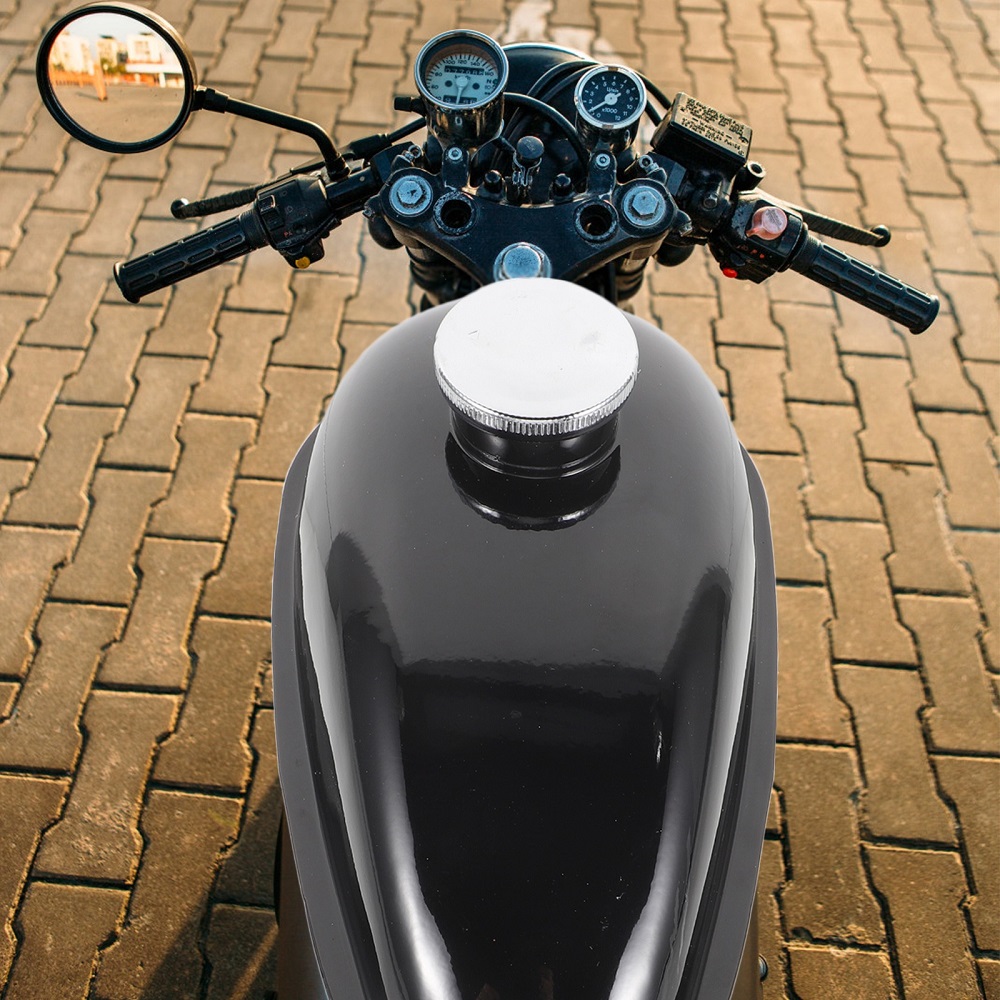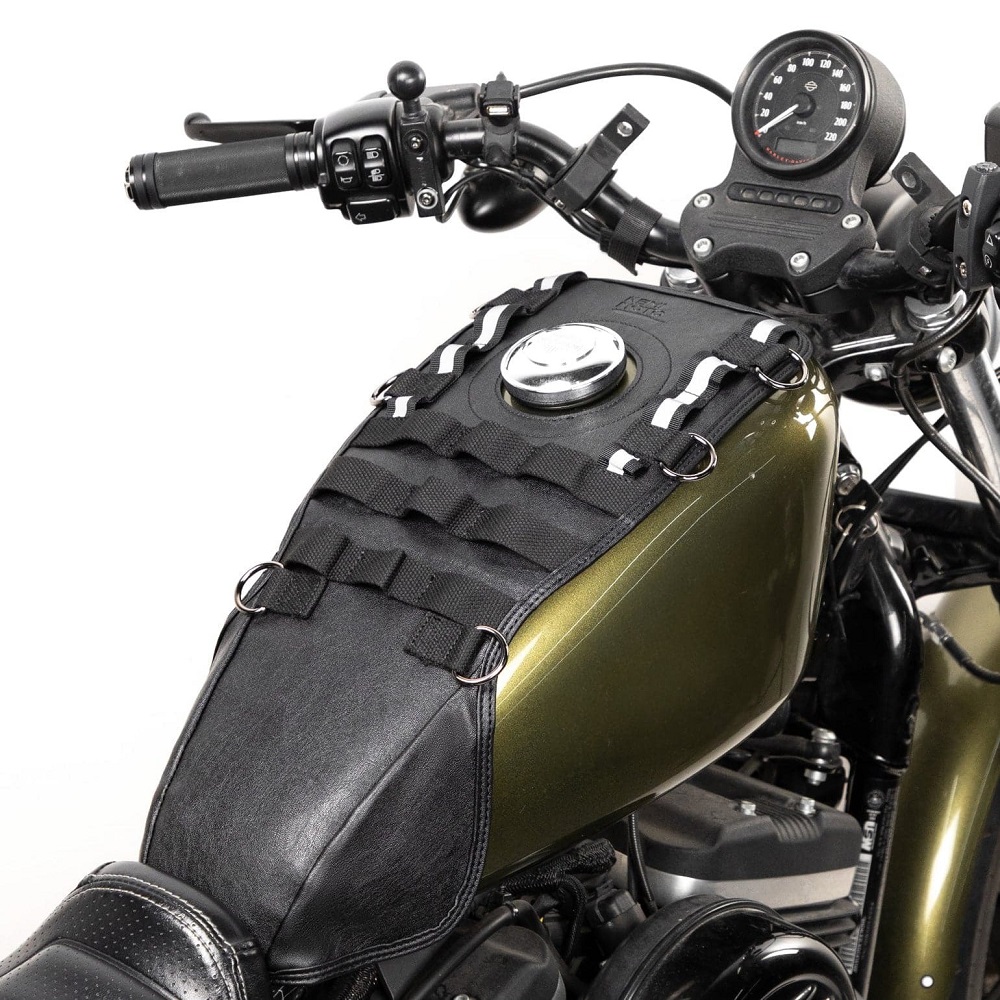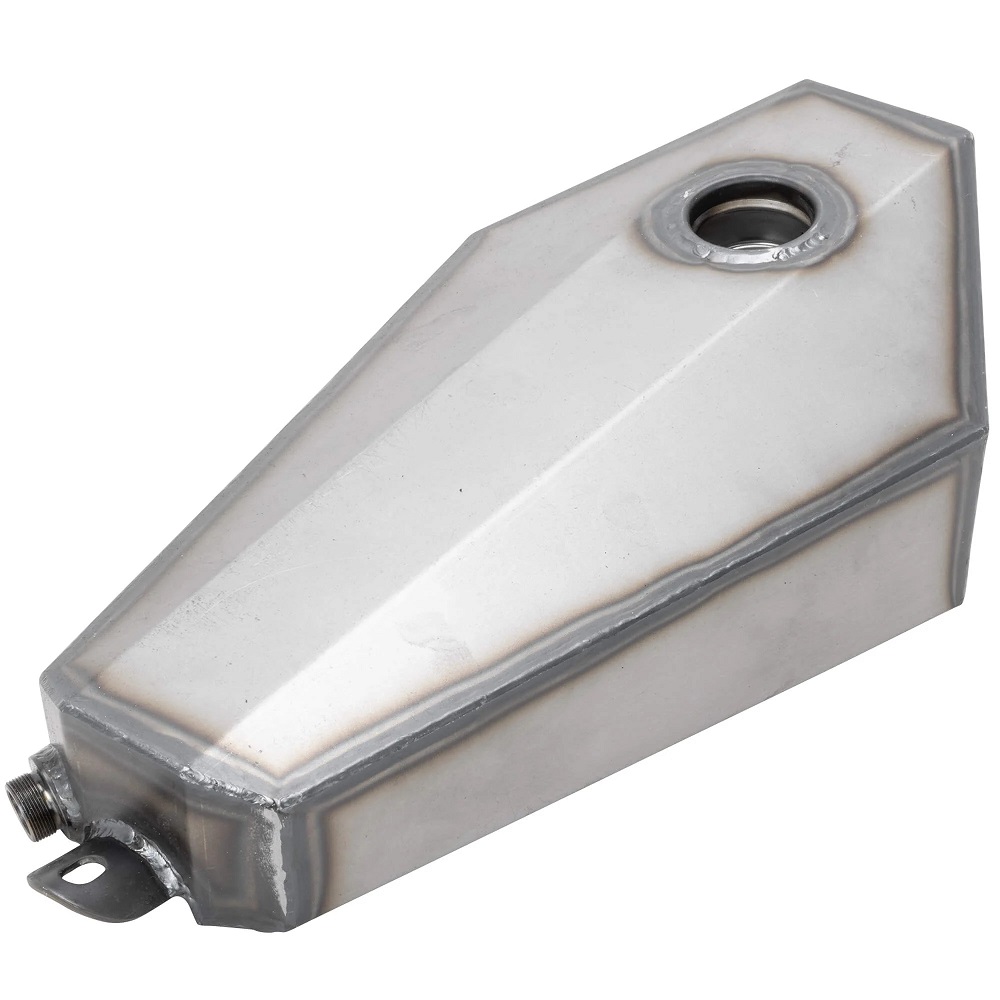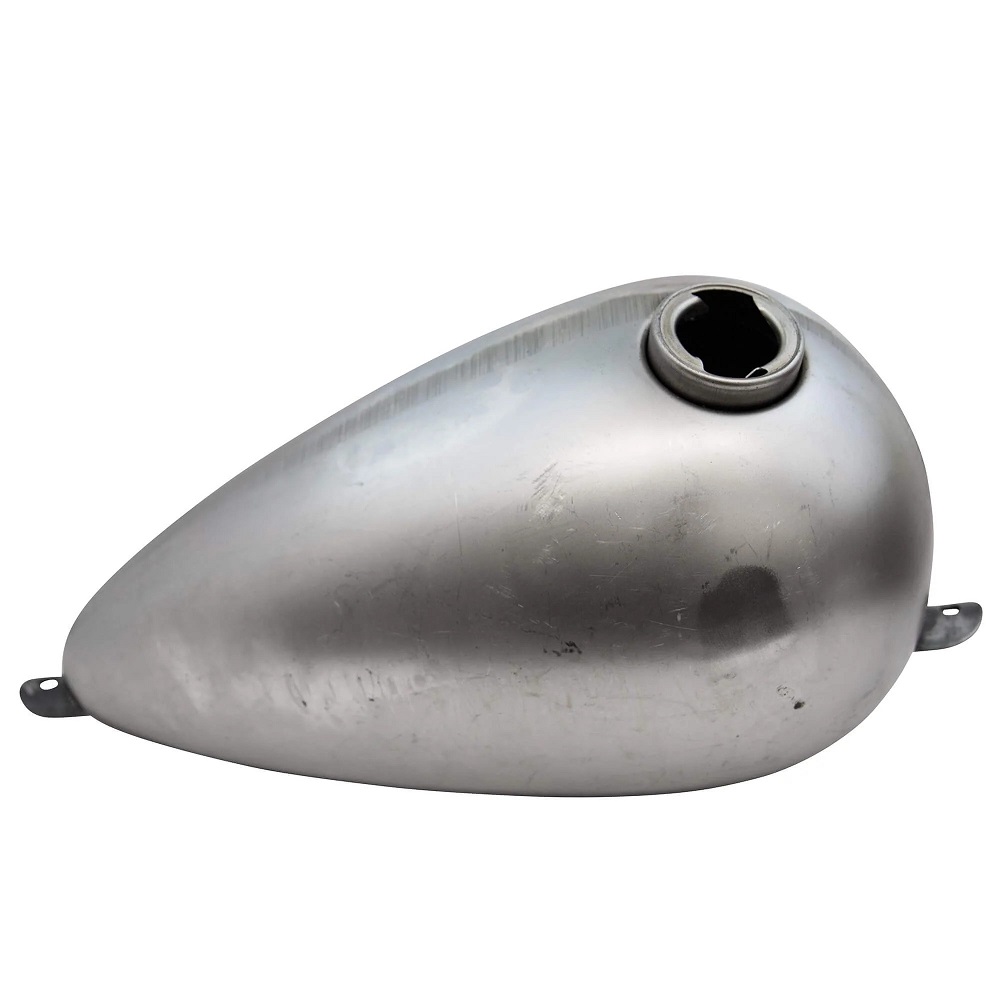Introduction to Motorcycle Gas Tanks
A motorcycle gas tank plays a crucial role in your bike’s performance. It holds the fuel that powers the engine, making it an essential component. Typically located on top of your motorcycle’s frame, the gas tank is carefully designed for efficiency and safety.
Motorcycle gas tanks vary in shape, size, and capacity, depending on the bike’s purpose. Sportbikes tend to have smaller, sleeker tanks, while touring bikes feature larger tanks for extended rides. The tank’s capacity directly impacts the distance a motorcycle can travel before refueling.
Gas tanks are not just functional; they enhance the bike’s appearance. Manufacturers design tanks to complement the bike’s overall style. From classic round designs to modern angular shapes, the gas tank contributes to the motorcycle’s aesthetic appeal.

The materials used for gas tanks have evolved over time. Once made mostly from steel, many modern tanks incorporate aluminum or plastic. Each material has its own advantages, such as durability, weight reduction, and resistance to rust.
Understanding your motorcycle gas tank is important for maintenance and customization. Proper care ensures safety and longevity. Additionally, customizing your tank allows you to personalize your bike and express your style. Consider your riding needs while selecting or modifying a gas tank.
Whether you’re a seasoned rider or a beginner, a working understanding of motorcycle gas tanks is essential. It helps ensure your safety, improves your bike’s performance, and enhances its overall aesthetics. Take care of your motorcycle gas tank to enjoy a reliable and stylish ride.
Types of Motorcycle Gas Tanks
Motorcycle gas tanks come in various types, each catering to different riding needs and styles. Understanding the types available can help you choose the best tank for your motorcycle.
Standard Gas Tanks
Standard tanks are commonly found on cruiser motorcycles. These tanks are practical and offer a balance between capacity and aesthetics. They typically have a rounded design and medium capacity, making them suitable for everyday riders.
Sportbike Gas Tanks
Sportbike gas tanks are designed for performance and speed. They are slimmer and smaller, with shapes optimized for aerodynamics. These tanks hold less fuel but keep the bike lightweight for improved speed and maneuverability.
Touring Gas Tanks
Touring gas tanks are built for long-distance rides. They have larger capacities to support extended journeys without frequent refueling. These tanks are often designed with additional features like built-in compartments for convenience.
Off-Road Gas Tanks
Off-road gas tanks are made for dirt bikes and adventure motorcycles. These tanks are durable and compact to endure rough conditions. They often have a smaller capacity to support light and agile riding.
Custom Gas Tanks
Custom gas tanks are popular among riders looking to personalize their bikes. These tanks can be tailored to unique designs, shapes, and sizes. Riders can opt for custom tanks to match their bike’s specific style or performance needs.
Auxiliary Gas Tanks
Auxiliary tanks are ideal for riders who need extra fuel on lengthy trips. These tanks are often mounted as secondary fuel cells on the bike. They provide additional range and can be easily detached when not needed.
Choosing the right type of motorcycle gas tank is crucial. Evaluate your riding style, needs, and priorities to make the best decision for your bike.

Materials Used in Motorcycle Gas Tanks
Motorcycle gas tanks are made using various materials, each with unique benefits. Modern designs emphasize durability, weight reduction, and resistance to wear.
Steel Gas Tanks
Steel tanks have been widely used for years in motorcycle manufacturing. They are heavy but offer exceptional durability. Steel resists impacts and is less likely to crack under stress.
Aluminum Gas Tanks
Aluminum tanks are preferred for lightweight motorcycles. They weigh less and contribute to better fuel efficiency. Aluminum is corrosion-resistant, making it a long-lasting choice.
Plastic or Polymer Gas Tanks
Plastic tanks are modern and versatile. They are lightweight and don’t rust like metal tanks. They also come in various shapes, offering customization options to riders. However, they may not be as durable as steel or aluminum.
Composite Gas Tanks
Composite tanks combine multiple materials to balance performance and cost. They are strong yet lightweight. These tanks often feature layers for added protection from impact.
Fiberglass Gas Tanks
Fiberglass tanks are lightweight with a smooth finish. They often appeal to custom motorcycle enthusiasts due to their flexible design options. However, they need proper maintenance to avoid wear and tear.
Titanium Gas Tanks
Titanium gas tanks are rare and expensive. They are extremely durable and weigh less than steel. These tanks are often chosen for high-performance motorcycles.
The material of a gas tank affects its weight, durability, and style. Select a tank made from materials suited to your bike’s purpose and your riding style.

How to Maintain Your Motorcycle Gas Tank
Proper maintenance of your motorcycle gas tank ensures longevity and optimal performance. Neglecting it can lead to costly repairs or replacements. Below are some essential tips for maintaining your gas tank:
Regular Cleaning
- Empty the Tank: Drain all fuel before cleaning the tank. Use a fuel-safe container.
- Rinse with Cleaner: Use a fuel-tank cleaner to remove debris and sediment.
- Inspect Inside: Look for any rust or buildup during cleaning.
- Dry Completely: Ensure the tank is dry before refilling with fuel to prevent rust.
Check for Corrosion
- Visual Inspection: Regularly check the tank for rust or corrosion.
- Use Anti-Rust Products: Apply a fuel tank sealer or anti-rust coating.
- Keep Full: Keep the tank filled to prevent moisture from causing rust.
Inspect Fuel Lines and Caps
- Tighten the Cap: Ensure the gas cap is secure to avoid fuel evaporation.
- Check Fuel Lines: Inspect for cracks, leaks, or wear and replace if needed.
- Examine the Vent System: Maintain proper air circulation for smooth fuel flow.
Use Quality Fuel
- Good Fuel: Use high-quality fuel to prevent deposit buildup.
- Avoid Contaminated Fuel: Check for water or debris in your fuel.
- Add Fuel Stabilizers: Prevent fuel deterioration, especially during storage.
Avoid Long-Term Storage with Full Tank
- Seasonal Storage: Drain the tank or use a stabilizer when storing the bike.
- Start the Engine: Run the engine occasionally to prevent fuel stagnation.
Address Leaks Immediately
- Inspect for Leaks: Check frequently for fuel leaks or drips.
- Repair Promptly: Address any issues immediately to prevent further damage.
Maintaining your motorcycle gas tank doesn’t require much effort but delivers significant benefits. A clean and well-maintained tank ensures efficient fuel delivery, prevents damage, and extends the life of your motorcycle.
Common Issues with Motorcycle Gas Tanks
Motorcycle gas tanks can encounter several issues over time. Identifying and resolving these problems early is essential for safety and performance.
Rust and Corrosion
Rust is a common problem, especially in steel gas tanks. It occurs due to moisture buildup inside the tank. Corrosion can damage the tank’s structure and contaminate fuel. Prevent rust by using anti-rust coatings, keeping the tank dry, and using quality fuel.
Fuel Leaks
Fuel leaks happen due to cracks, worn seals, or damaged fuel lines. Leaks not only waste fuel but also pose fire hazards. Regular inspection and prompt repairs can prevent leaks. Replace damaged seals and lines immediately.
Sediment and Debris
Over time, sediment or debris can collect in the tank. This affects the fuel flow and clogs fuel lines. Regular cleaning and using fuel tank cleaners help remove built-up debris.

Vapor Lock
Vapor lock occurs when fuel evaporates in the lines, disrupting fuel flow to the engine. This can happen during hot weather or due to clogged vent systems. Keep the vent system clear to maintain airflow.
Faulty Gas Caps
Malfunctioning gas caps can cause fuel evaporation and introduce dirt into the tank. Check for secure gas caps regularly and replace them if damaged.
Dented Tanks
Accidental impacts can dent the tank, reducing its capacity and damaging the bike’s appearance. Repair dents promptly to maintain the tank’s integrity.
Blocked Fuel Vents
Blocked vent systems prevent air from entering the tank and disrupt smooth fuel flow. Clean vents regularly to avoid performance issues.
Tank Overheating
Excess heat can damage the tank and cause fuel evaporation. Avoid prolonged exposure to direct sunlight and invest in tank insulation if needed.
By addressing these common issues, you can extend the life of your motorcycle gas tank and ensure safe riding.
How to Replace a Motorcycle Gas Tank
Replacing a motorcycle gas tank may feel overwhelming, but it’s straightforward with proper steps. Before starting, ensure you have the right tools and a suitable replacement tank. Follow this guide to replace your motorcycle gas tank safely and effectively:
1: Gather Necessary Tools and Supplies
- Wrenches or socket set
- Screwdrivers
- Fuel-safe container to drain fuel
- Clean rags or towels
- Fuel-resistant gloves
- Replacement gas tank
2: Drain the Fuel Tank
- Turn off the fuel valve: Ensure no fuel flows during the process.
- Disconnect the fuel line: Place the end of the line into the fuel-safe container.
- Drain the fuel: Open the valve and let the gas flow out completely.
3: Disconnect Components
- Remove bolts: Unscrew the bolts securing the tank to the frame.
- Detach fuel lines: Carefully disconnect the remaining hoses attached to the tank.
- Unplug electrical connections: If your tank has built-in sensors, remove these connections carefully.
4: Remove the Old Tank
- Lift the tank off: Gently lift the tank off the frame and set it aside.
- Inspect parts: Check the fuel lines, brackets, and fittings for wear or damage.
5: Install the New Tank
- Position the tank: Align the new tank with the mounting brackets.
- Secure it: Attach the tank with bolts, ensuring they are tightened properly.
- Reconnect components: Reattach all hoses and electrical connections tightly.
6: Refill the Tank
- Add fuel: Pour fuel into the new tank using a funnel to avoid spills.
- Check for leaks: Inspect all connections and the tank for leaks.
7: Test Ride the Motorcycle
- Start the engine and let it run for a few minutes.
- Check for any leaks or irregularities in performance.
- Take a short test ride to confirm everything functions properly.
Additional Tips
- Use a manual: Refer to your bike’s user manual for model-specific instructions.
- Seek help: If you’re unsure, consult a professional to avoid mistakes.
- Dispose of fuel properly: Follow local guidelines for safe fuel disposal.
Replacing a motorcycle gas tank can extend your bike’s life and enhance safety. With attention to detail, you can complete this task effectively.

Customization Options for Motorcycle Gas Tanks
Customizing your motorcycle gas tank is a perfect way to express personal style. It enhances both aesthetics and functionality according to your unique needs. Here are some popular customization options:
Custom Paint Jobs
Designing a custom paint job can make your gas tank stand out. Choose from bold colors, patterns, or airbrushed graphics. This option allows you to express your personality and creativity.
Unique Shapes and Sizes
Some riders prefer custom-shaped or uniquely designed gas tanks. These modifications can give your bike a signature and distinctive appearance. You can work with fabricators to create one-of-a-kind designs tailored to your preferences.
Tank Decals and Wraps
Decals and wraps are a cost-effective way to customize your tank. They come in various patterns, colors, and textures. This option allows you to regularly switch designs without permanent commitments.
Additional Storage Compartments
For practical customizations, add small compartments to your tank. These can hold tools, gloves, or small personal items during your rides.
Custom Fuel Caps
Upgraded fuel caps add a touch of style and can improve functionality. Choose from decorative, vintage, or modern designs to match your bike’s theme.
Polished or Brushed Metal Finish
Leaving your tank unpainted with a polished or brushed metal finish offers a sleek, raw look. This is a popular choice for riders who prefer minimalist or industrial aesthetics.
Compatible Fuel Capacity Adjustments
Some riders opt to increase or decrease tank capacity. This adjustment is useful for long-distance tours or reducing weight for better speed.
Engraving and Etching
Engraving your name, logo, or symbols onto your tank adds a personal touch. This intricate detail gives your bike a customized and premium feel.
Before diving into customization, keep the following tips in mind:
- Consult a Professional: Work with experienced designers and fabricators for safe and durable modifications.
- Set Your Budget: Customizations vary in price. Have a budget to avoid overspending.
- Consider Functionality: Ensure the customization doesn’t compromise the tank’s durability or performance.
- Legal Compliance: Confirm your modifications adhere to local motor vehicle regulations.
With thoughtful customization, your motorcycle gas tank can turn your bike into a reflection of your unique style and riding identity.
Tips for Choosing the Right Gas Tank for Your Motorcycle
Selecting the ideal motorcycle gas tank improves performance, aesthetics, and convenience. Keep these tips in mind:
Understand Your Riding Needs
Determine the type of riding you do most often. Commuters may prefer medium-capacity standard tanks, while long-distance riders might require larger touring tanks.
Consider Fuel Capacity
Check the tank’s capacity and match it to your riding habits. A bigger tank suits extended trips, while smaller tanks are great for short rides or lightweight motorcycles.
Evaluate Materials
- Steel: Durable but heavy. Ideal for rugged bikes.
- Aluminum: Lightweight and corrosion-resistant.
- Plastic: Light and versatile but less durable.
- Composite: Combines durability and weight reduction.
Choose a material that balances durability and performance.
Fit and Compatibility
Ensure the gas tank is compatible with your motorcycle model and mounting system.
Check the tank dimensions and fittings before buying.
Aesthetic Appeal
Select a tank design, color, or finish that complements your bike’s style. Custom options are great for personalization.
Budget Considerations
Set a budget for your purchase. Higher quality materials or custom tanks may cost more.
Safety Features
Choose tanks with safety features. Look for products with rust resistance and durable seals.
Manufacturer Reputation
Purchase from reputable manufacturers. Quality tanks will last longer and offer better durability.
Additional Features
Consider added elements like compartments, custom caps, or fuel filters to match your needs.
Seek Expert Advice
Consult professionals or fellow riders for recommendations. Reviews and forums can offer valuable insights.
Choosing the right motorcycle gas tank ensures optimal performance and showcases your unique style. Take your time to make an informed decision suited to your riding preferences.

Leave a Reply